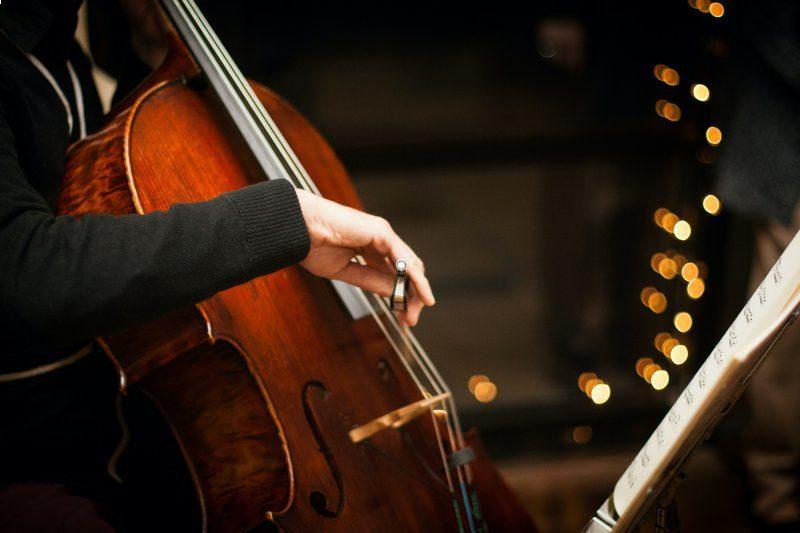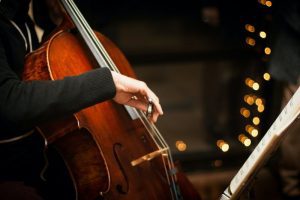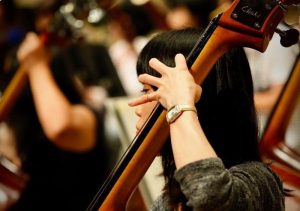The cello that we have today in orchestras, chamber ensembles, or on stage is not the same cello that our good friends, Bach or Handel once used. Although this evolution has not been incredibly drastic in the way that many other instruments have changed and evolved over the years. Visually, there are only slight differences between the baroque cello and the modern cello.
What Does “Baroque” Mean, Anyway?
For those of us that are not familiar with the term Baroque and what that means regarding time, the Baroque time period is around the beginning of the 17th to the middle of the 18th century. If you need a historical reference, that is around the end of Queen Elizabeth’s reign and then King James VI’s reign as the beginning of the period.
On the other side of this era, we are leading up to thirteen colonies attempting to declare independence from the Brits. Cello is from the same family as the violin and viola and notably, not the bass. Sorry bassists! You can’t sit with us! Actually there was no room at the table for bass anyway! During these times, cello, or violoncello, was the primary bass instrument. Music had just been saved at this point by Monteverdi, who is the reason we have music with layered parts that are all important.
How Does a Baroque Cello Work?
Baroque cello being a bass instrument is similar to the electric bass and/or rhythm guitar in any rock band type group. The baroque cello, upon observation, has a shorter fingerboard than modern cellos. Due to its shorter fingerboard, violoncello was relocated to the bass position in any ensemble. Harpsichord is more like the actual bass of this time.
I like to think that Bach and Handel composed pieces for the church, and had their friends over the night before, saying the 18th century version of “this is lit.” Hearing the rustic, improvisatory sound of a Bach Prelude in the making and JS’s friends giving their two cents about this composition that would later become ubiquitous with classical music and cello.
Eventually, the cello would become more of a tenor and soloist instrument. This meant that it would have to play much higher. That wasn’t possible with its original fingerboard, so the modern cello has a much longer fingerboard.
What Are the Differences Between Baroque & Modern Cello?
Baroque musicians and musicians up until the Romantic era were mostly employed by the church. The churches of ol’ were not the small buildings we know of today. No, churches were cathedrals of overwhelming grandeur, like Notre Dame de Paris or Notre Dame de Orlean.
If you can go see the cathedrals in France and Germany, I highly recommend it. Their beauty and refinement is unmatched. More importantly, the sound in these cathedrals moved very differently. And that was the sound that composers and instrument makers during the Baroque time period had in mind. It does not take much effort to be heard in these cathedrals and that small sound reverberates for an eternity. So, the baroque cellos were much quieter and had more of a textured sound. This sound was created by strings that were not of the same material as our modern strings.
Ready to be kinda grossed out? Do you know what sausage lining is made of? It’s made from pig intestines. And guess what, baroque cello strings were made of either cow or sheep intestines. Take a second to think about that, it is pretty gnarly. The upper two strings are unwrapped, meaning they do not have anything added to them and the lower strings have a metal wound around them. This produced a smaller sound that had more grit to it.
Additionally, the angle of the neck on a baroque cello is less drastic than the modern cello resulting in less string tension. Stay with me for a moment, in music the more tension physically, the less tense the music sounds. Trust me, it sounds odd but I guarantee that it works for most musical performance concepts.
The last two aspects of baroque cello that we need to discuss are the bow and how to hold the darn thing.
Baroque Cello Bows Are a Little Like a Bow & Arrow…
Baroque cello bows are legitimately one of the coolest. And they’re a little like a bow and arrow. Modern bows have a dip in the middle that allows for continuous sound from one part of the bow to the next. Baroque bows, on the other hand, embraced the differences of sound in the different parts of the bow.
Bows in the baroque time period were convex, or just point in some instances. This created a sighing sound, which is characteristic of the Baroque and Classical eras. To get an idea of what all of this sounds like, listen on YouTube to a baroque cellist performing Bach’s cello suites. There is a sweetness and rustic grounded feeling to the sound that is exactly the sound of this time period.
The last thing that is different of the baroque cello vs modern is the little stick thing at the bottom of the cello. The end pin or spike is a modern invention. It came after the industrial revolution. Baroque cello players held the cello on their calves. Without the end pin, Baroque cellists simply placed the cello between their legs. That’s it, the cello rests on their calves, and is very stable.
To Truly Understand Baroque Cello… Listen to One in Concert
I highly recommend going to see a baroque orchestra and watching these amazing musicians. Listening to them is like being transported back 300 years, to a completely different time.
Braxton Alexander Porter


